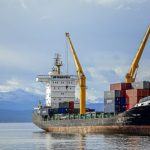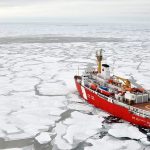NASA and Boeing Disagree on Rescue Strategy
Steve Stich, NASA’s Commercial Crew program manager, has revealed a significant rift between NASA and Boeing regarding the rescue plan for astronauts Sunita Williams and Butch Wilmore. The two organizations clashed over whether it was safe for the astronauts to return to Earth aboard the faulty Starliner spacecraft.
Starliner to Return Uncrewed Amid Disagreements
Following a reported disagreement, as detailed by The New York Post, NASA and Boeing decided that the risks associated with sending Williams and Wilmore back on the malfunctioning Starliner were too high. Consequently, the spacecraft will make its return uncrewed on Thursday, September 5, with an expected arrival on Earth by September 7.
Williams and Wilmore to Await SpaceX Rescue
With the Starliner deemed unsafe, Williams and Wilmore will remain aboard the International Space Station (ISS) until February 2025, when SpaceX’s Crew-9 mission is scheduled to rescue them. This adjustment abandons the original mission plan, which involved the Starliner returning the astronauts to Earth. The decision reflects a prioritization of crew safety over the spacecraft’s issues, marking a setback for Boeing.
Tensions Revealed in Teleconference
During a teleconference on Wednesday, September 4, Steve Stich admitted that the discussions leading to the decision were fraught with tension. The decision to use SpaceX for the rescue mission rather than Boeing’s spacecraft created friction between the two organizations.
“I would say, anytime you’re in a meeting of this magnitude, where there’s this kind of decision, there is some tension in the room,” Stich said of the decision to bring the Starliner home without astronauts.
He set the record straight: “The teams were very split.”
Stich confirmed that Boeing was confident in the predictive model they had developed to assess thruster degradation for the remainder of the flight. However, NASA identified limitations in the model during their review.
NASA’s final decision hinged on whether they trusted the Starliner’s thrusters. Although Dana Weigel, NASA’s ISS program manager, acknowledged Boeing’s confidence in their spacecraft, she emphasized that Boeing was not in the same position as NASA.
Ultimately, the decision rested with NASA. “Boeing is not in a position to evaluate the risk trade-offs NASA was considering—either bringing the crew back in the Starliner or pursuing an alternate plan,” Weigel explained during a press conference. Boeing recognized that NASA had the final authority.
Despite comments about “tensions in the room,” Steve Stich clarified that the disagreements weren’t dramatic. “It wasn’t a yelling or screaming match. It was a serious technical discussion with both sides carefully considering the data.”
These revelations follow a NY Post report citing a NASA executive who described Boeing as “wildly irresponsible.” Mark Nappi, head of Boeing’s Commercial Crew Program, reportedly sent an internal email stating: “While this isn’t the outcome we hoped for, we are prepared to support NASA’s decision.”
He added: “Our top priority remains the safety of the crew and spacecraft. I have full confidence in our team to safely and successfully return the Starliner to Earth, just as you did in the first half of the mission.”






